
Bondi Junction is an eastern suburb of Sydney, in the state of New South Wales, Australia. It is 6 kilometres east of the Sydney central business district and is part of the local government area of Waverley.
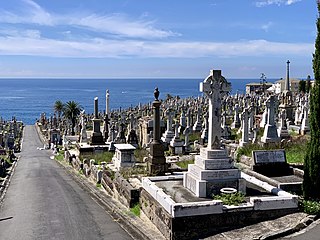
The Waverley Cemetery is a heritage-listed cemetery on top of the cliffs at Bronte in the eastern suburbs of Sydney, New South Wales, Australia. Opened in 1877 and built by R. Watkins and P. Beddie, the cemetery is noted for its largely intact Victorian and Edwardian monuments. It is regularly cited as being one of the most beautiful cemeteries in the world. The cemetery contains the graves of many significant Australians including the poet Henry Lawson. Also known as General Cemetery Waverley, it was added to the New South Wales State Heritage Register on 28 October 2016.

Wynyard Park is a 0.7-hectare (2-acre) urban park in the Sydney central business district, in Sydney, New South Wales, Australia. Wynyard Park is bounded by York, Carrington, Margaret and Wynyard Streets. Surrounded by modern high-rise buildings it is one of the most densely built-up and intensively used parks in Sydney. Entrances to Wynyard railway station are located on the north-eastern and north-western corners of the park.

Waverley is a suburb in the Eastern suburbs of Sydney, in the state of New South Wales, Australia. Waverley is located seven kilometres east of the Sydney central business district, in the local government area of Waverley Council.
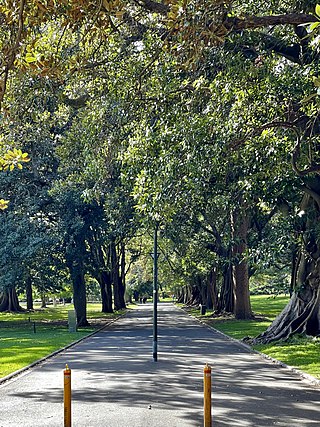
The Domain is a heritage-listed 34-hectare (84-acre) area of open space located on the eastern fringe of the Sydney central business district, in the City of Sydney local government area of New South Wales, Australia. Separating the central business district from Woolloomooloo, The Domain adjoins the Royal Botanic Gardens and is managed by the Royal Botanic Gardens Trust, a division of the NSW Office of Environment and Heritage, an agency of the Government of New South Wales. The Domain is used as a venue for outdoor concerts, open-air events, large political gatherings and rallies, as well as being used daily by the people of Sydney for exercise and relaxation. Along with the Royal Botanic Gardens, The Domain was added to the New South Wales State Heritage Register on 2 April 1999.

The Cathedral Church and Minor Basilica of the Immaculate Mother of God, Help of Christians is the cathedral church of the Roman Catholic Archdiocese of Sydney and the seat of the Archbishop of Sydney, currently Anthony Fisher OP. It is dedicated to the "Immaculate Mother of God, Help of Christians", Patroness of Australia and holds the title and dignity of a minor basilica, bestowed upon it by Pope Pius XI on 4 August 1932.

St Patrick's Seminary, Manly is a heritage-listed former residence of the Archbishop of Sydney and Roman Catholic Church seminary at 151 Darley Road, Manly, Northern Beaches Council, New South Wales, Australia. The property was also known as St Patrick's Estate, St. Patricks Estate, St. Patrick's Seminary or College, Cardinal's Palace, Archbishop's Residence, St Pats, St Patricks and Saint Paul's Catholic College. It was designed by Sheerin & Hennessy, Hennessy & Hennessy, Scott Green & Scott and Sydney G Hirst & Kennedy and built from 1885 to 1889 by William Farley (Residence/Palace), W. H. Jennings (College/Seminary). The property is owned by the Catholic Archdiocese of Sydney. The property was added to the New South Wales State Heritage Register on 21 January 2011.

The National Shrine and Church of Our Lady of the Sacred Heart is a Roman Catholic church in Randwick, Sydney, New South Wales, Australia. It is heritage-listed.
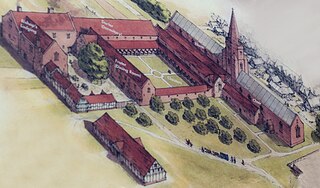
The Franciscan Friary was once a large estate located on the west side of Lichfield city centre in Staffordshire. The estate was built and inhabited by the Franciscan Friars from 1237. At one time the estate consisted of a large church, a cloister, dormitory lodge and a refectory building as well as many other domestic dwellings.
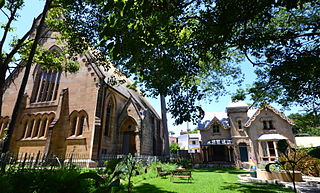
Reussdale is a heritage-listed former private house and now function centre located at 160 Bridge Road in the inner western Sydney suburb of Glebe in the City of Sydney local government area of New South Wales, Australia. It was designed and built by Ferdinand Reuss from 1868 to 1870. It is also known as the former Presbyterian Manse. The property is privately owned. It was added to the New South Wales State Heritage Register on 2 April 1999.
John Francis Hennessy (1853–1924) was an Australian architect practicing in New South Wales in the 1880s-1910s, concentrating on projects for the Catholic Church.
Hennessy & Hennessy was an architectural firm established in 1912 in Sydney, Australia that was responsible for a series of large scale office buildings in the 1930s in all capital cities in Australia, as well as New Zealand and South Africa, designed by John (Jack) Hennessy (1887–1955), described as Australia's first international architect.

Prince Alfred Square is a 1.5-hectare (3.7-acre) park on the northern side of the Parramatta River in the central business district of Parramatta. It is one of the oldest public parks in New South Wales and is listed on the New South Wales State Heritage Register. St Patrick's Cathedral is located directly opposite the square to the west.

Saints Mary and Joseph Catholic Cathedral is a heritage-listed cathedral at 132 Dangar Street, Armidale, Armidale Regional Council, New South Wales, Australia. It is the diocesan cathedral of the Roman Catholic Diocese of Armidale and the seat of the Catholic Bishop of Armidale. The cathedral was designed by John Hennessy of Sheerin and Hennessy, and built from 1911 to 1912 by George Frederick Nott. It is also known as the St Mary & St Joseph Catholic Cathedral and the Cathedral of Saint Mary and Saint Joseph. It was added to the New South Wales State Heritage Register on 13 February 2015.
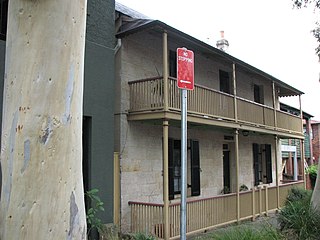
Charing Cross is a heritage-listed former homestead and former pre-school and now house and childcare centre at 11 Victoria Street, Queens Park, Waverley Municipality, New South Wales, Australia. It was built during 1860 and was added to the New South Wales State Heritage Register on 2 April 1999.

St Mary's Anglican Church is a heritage-listed Anglican church and associated facilities located at 240 Birrell Street, Waverley, in the Waverley Municipality, Sydney, New South Wales, Australia. The church was designed by Edmund Blacket and built between 1863 and 1864. It is very well known and sought after as a place to be married and is popular for funerals. The building is also notable due its pipe organ, designed and built by August Gern. The property is used for ministry by the Anglican Parish of Bondi and Waverley, which is an amalgamation of two previous Parishes ; The first Rector of St Mary’s Waverley, Rev Stanley Mitchell, was a keen Evangelical and although he used traditional Anglican liturgy was “low church” like most of Sydney Diocese. However there has been a long history of more “High” Anglicanism and Anglo Catholic theological underpinnings. Since 2014, the church has returned to a strongly evangelical base while running a very strong traditional 1662 prayer book communion service every Sunday. It also has less traditional al services to accommodate more contemporary congregations.

Waimea House is a heritage-listed residence located at Waimea Avenue, Woollahra in the Municipality of Woollahra local government area of New South Wales, Australia. It was built during 1858. It is also known as Helen Keller House. The property is privately owned. It was added to the New South Wales State Heritage Register on 2 April 1999.
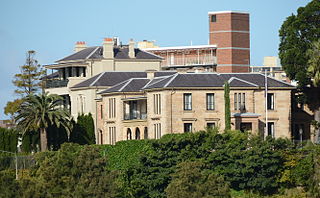
Bomera and Tarana are two jointly heritage-listed residences at 1 Wylde Street in the inner city Sydney suburb of Potts Point in the City of Sydney local government area of New South Wales, Australia. Bomera was designed by John Frederick Hilly and built in 1856 with alterations by Sheerin & Hennessy and built by Wheelwright & Alderson c. 1902. Tarana was designed by Edward H. Buchanan and built by John Alexander Oag in 1889, with additions including a third storey designed by Sheerin & Hennessy in 1907. The houses are also known as Boomera and Taranah. The property was added to the New South Wales State Heritage Register on 23 June 2000.

Pinnacle House is a heritage-listed former warehouse at 2-6 Barrack Street, in the Sydney central business district, in the City of Sydney local government area of New South Wales, Australia. It was designed by Sheerin & Hennessy and built from 1888 to 1892 by Allum Brothers. It was added to the New South Wales State Heritage Register on 2 April 1999.

Mount St Mary Campus of the Australian Catholic University is a major campus of the Australian Catholic University, located in Strathfield, Municipality of Strathfield, Sydney, New South Wales, Australia.




















